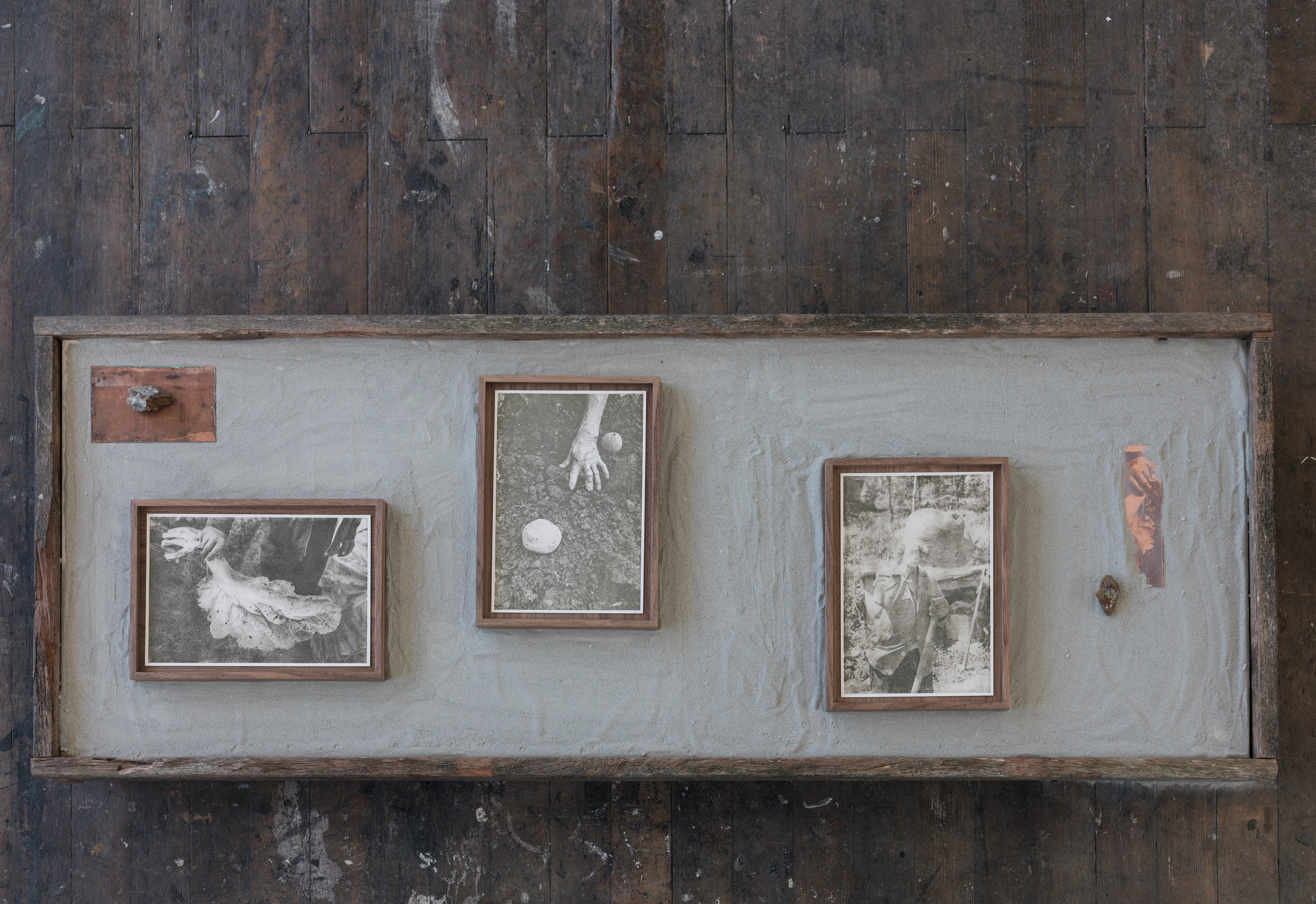Rocks, roots, unearth
2024At the Dexing Copper Mine in China, copper mining has marked the landscape with infertility and toxicity. Despite these harsh conditions, mine workers have taken up part-time gardening on this very land, engaging in the almost paradoxical act of nurturing the soil that their primary occupation continues to degrade.
Exploring the interconnectedness between the miners and the land through this duality of mining and gardening, I delve into the complex exchanges between what people extract from the land and what the land, in its altered state, gives back. By engaging with the miners who have woven gardening into their lives, I seek to uncover the personal narratives that thread through their daily experiences, reflecting on their bond with the transformed land beneath their feet, and their collective struggle between economic reliance and environmental disruption.
Using a mixed-media approach that combines photography, video documentation, and copper plate etching prints made from tailing sand collected from the mine, this project investigates the interactions between human and nonhuman forces that are central to the landscape’s infertility.

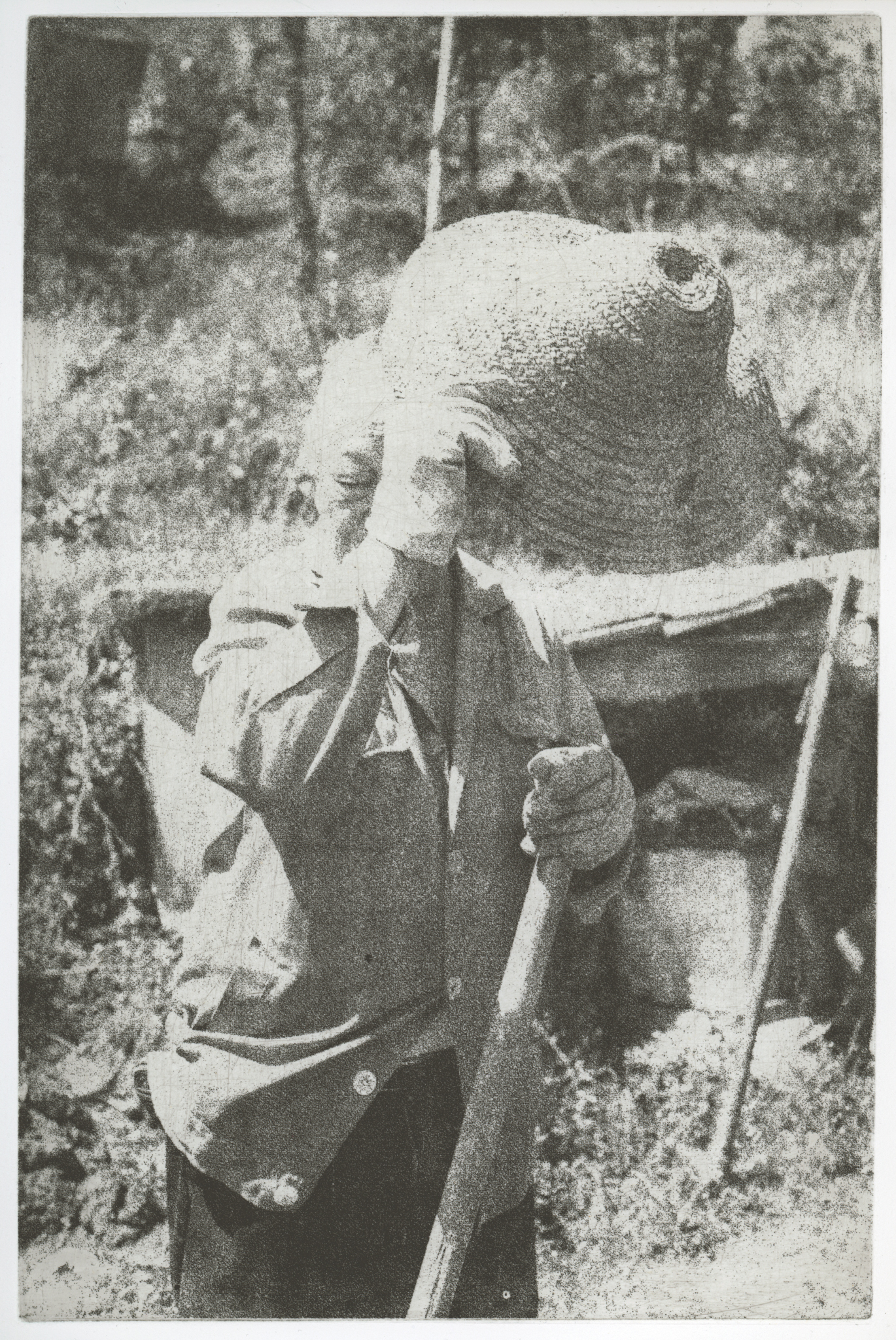
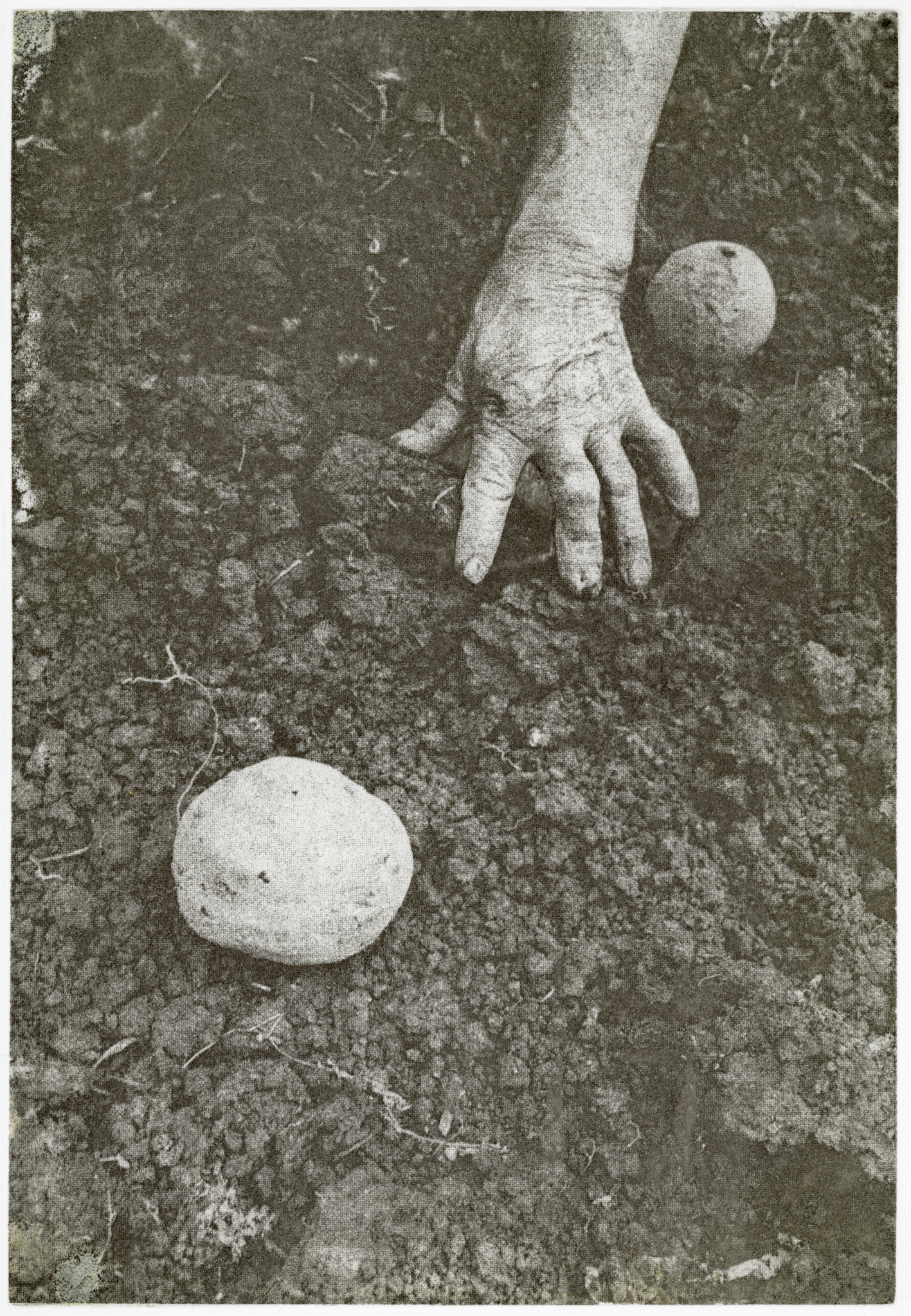
Copper plate chine-colle etching on Chinese mulberry paper, with ink made from copper tailings sand. 28.4 x 19 cm. Artist’s proofs. 2024.
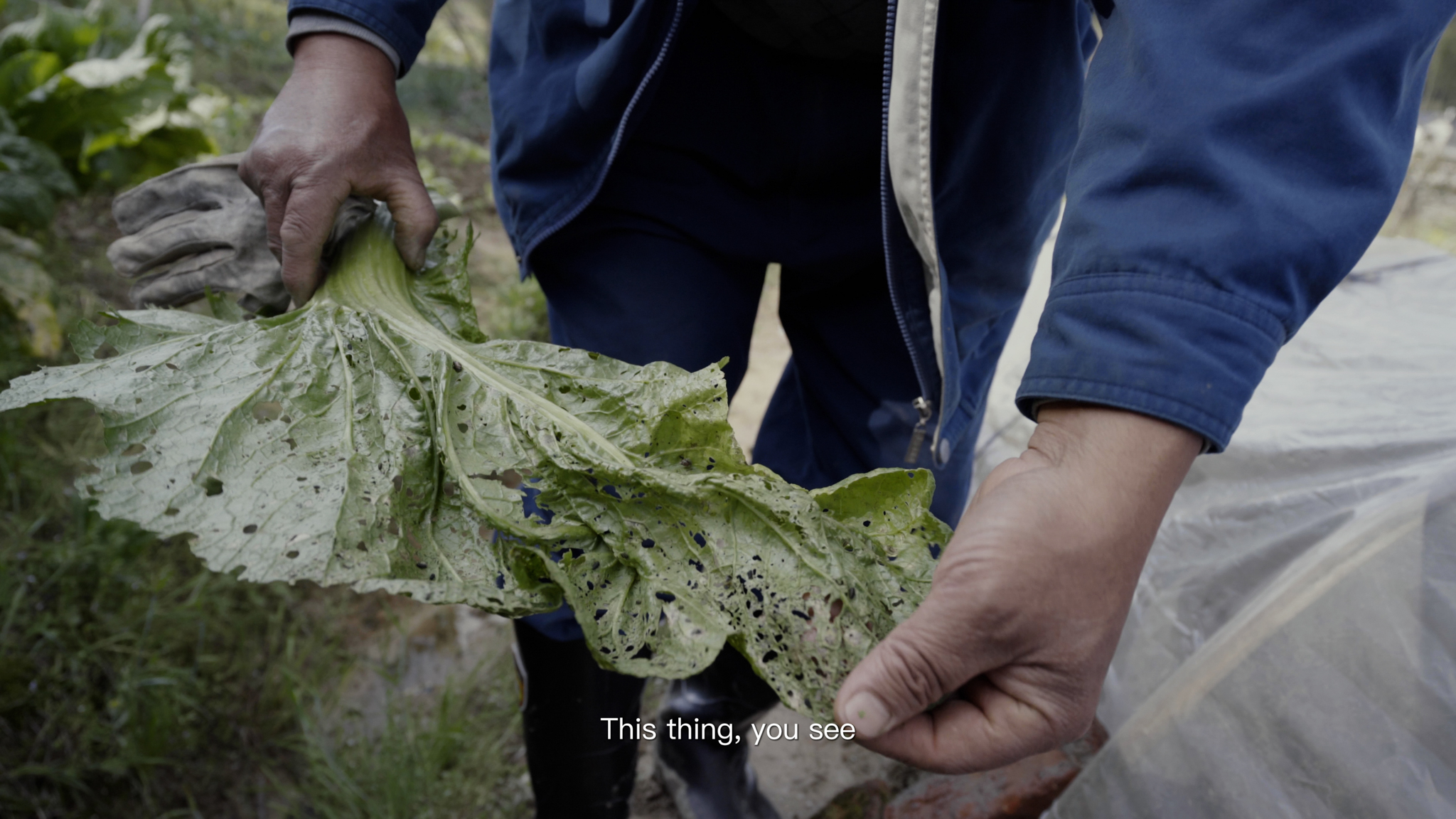
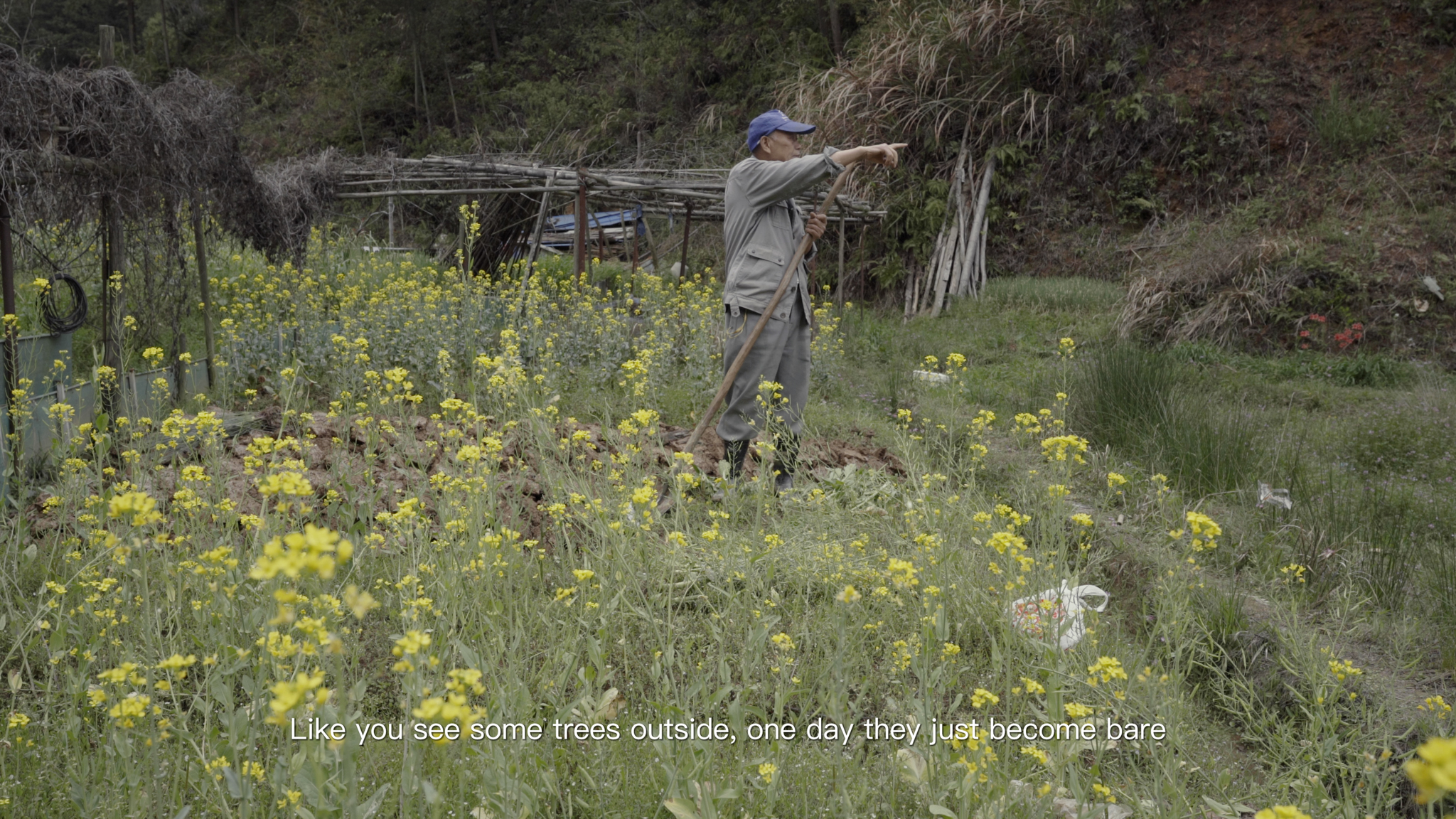
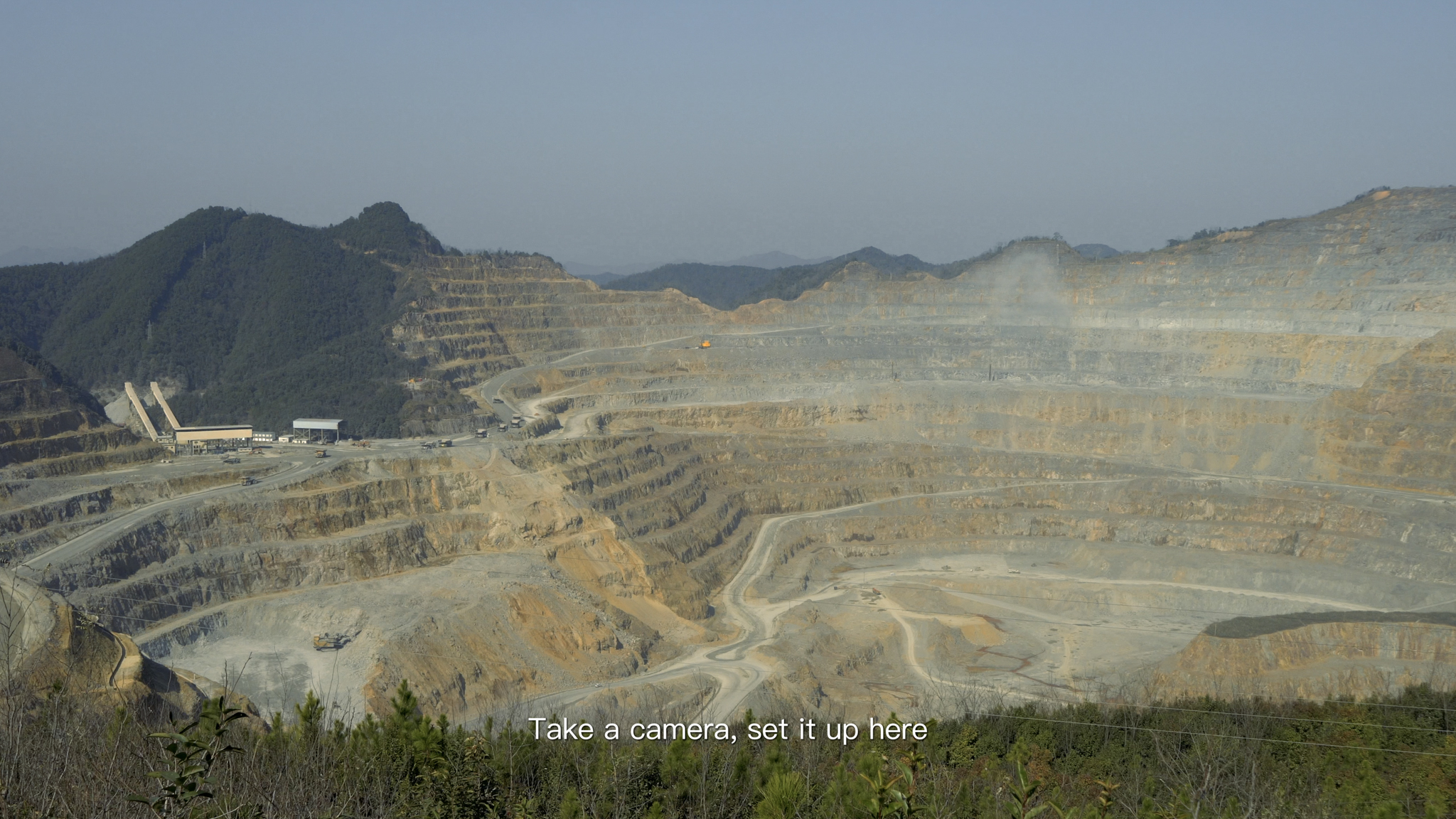
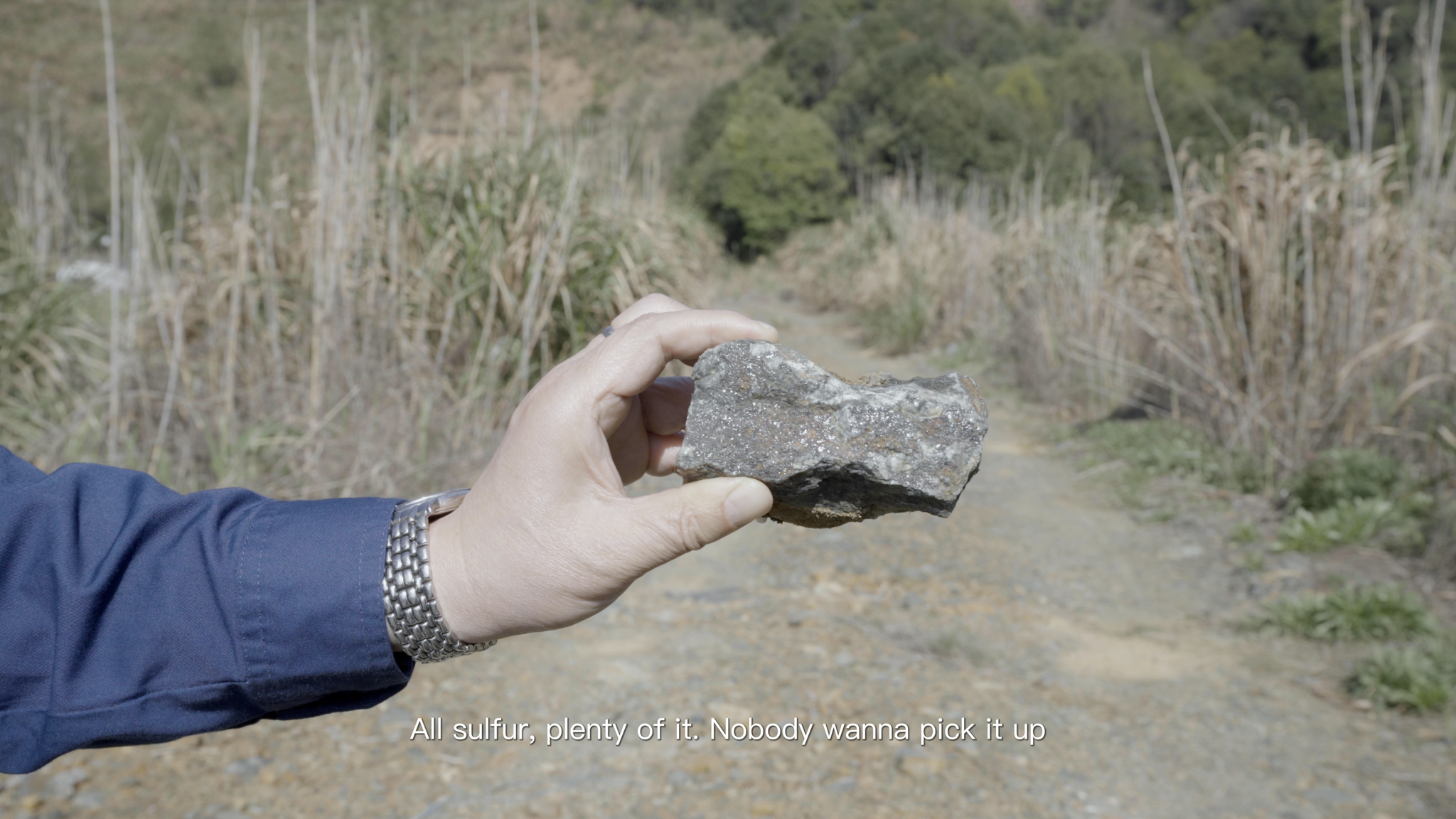
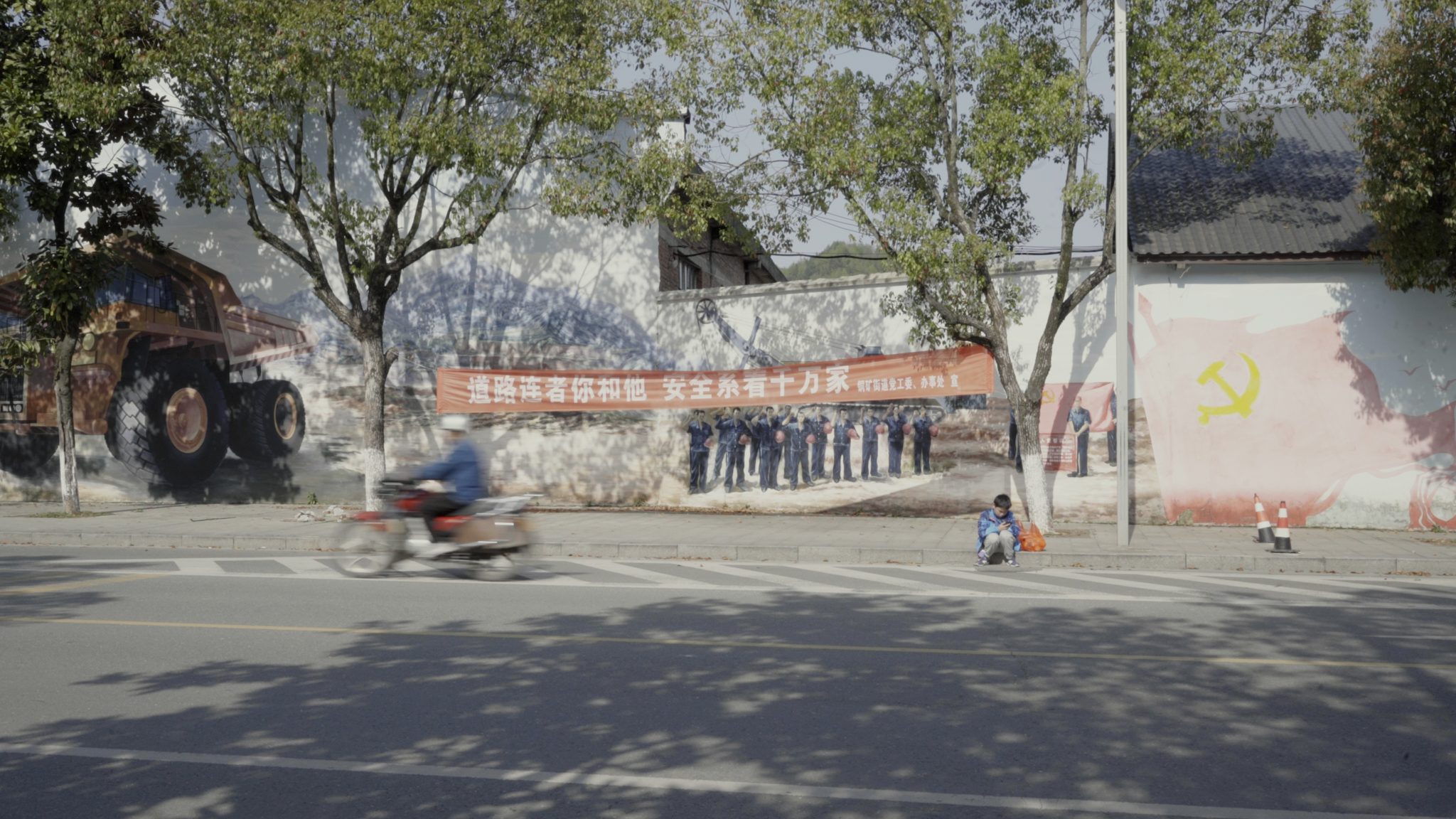
The film, In the Trace of Tilled Stones (20 min), offers a situated perspective that interweaves narratives of mining and gardening, showing how the miners interact with the landscape through both the extraction of ore and the cultivation of soil. As the miners share their reflections, the film captures the paradox of their dual roles, offering a grounded view for understandinggenerations tied to the mine by the industrialization of China.
︎︎︎Film project page on SEE NL.

Complementing the film, the copper etching prints transform the toxic remnants of mining into the material process of printmaking. Through the craft process of etching, the landscape is reproduced: ink made from the mining residuals is reintroduced into the engraved body of the copper plate, which is the end product of the mining. This process translates the paradox of the miners' labor, both in the garden and the mine. The printed images are not only about the photos they depict but also embody the materiality of the landscape of the mine.
